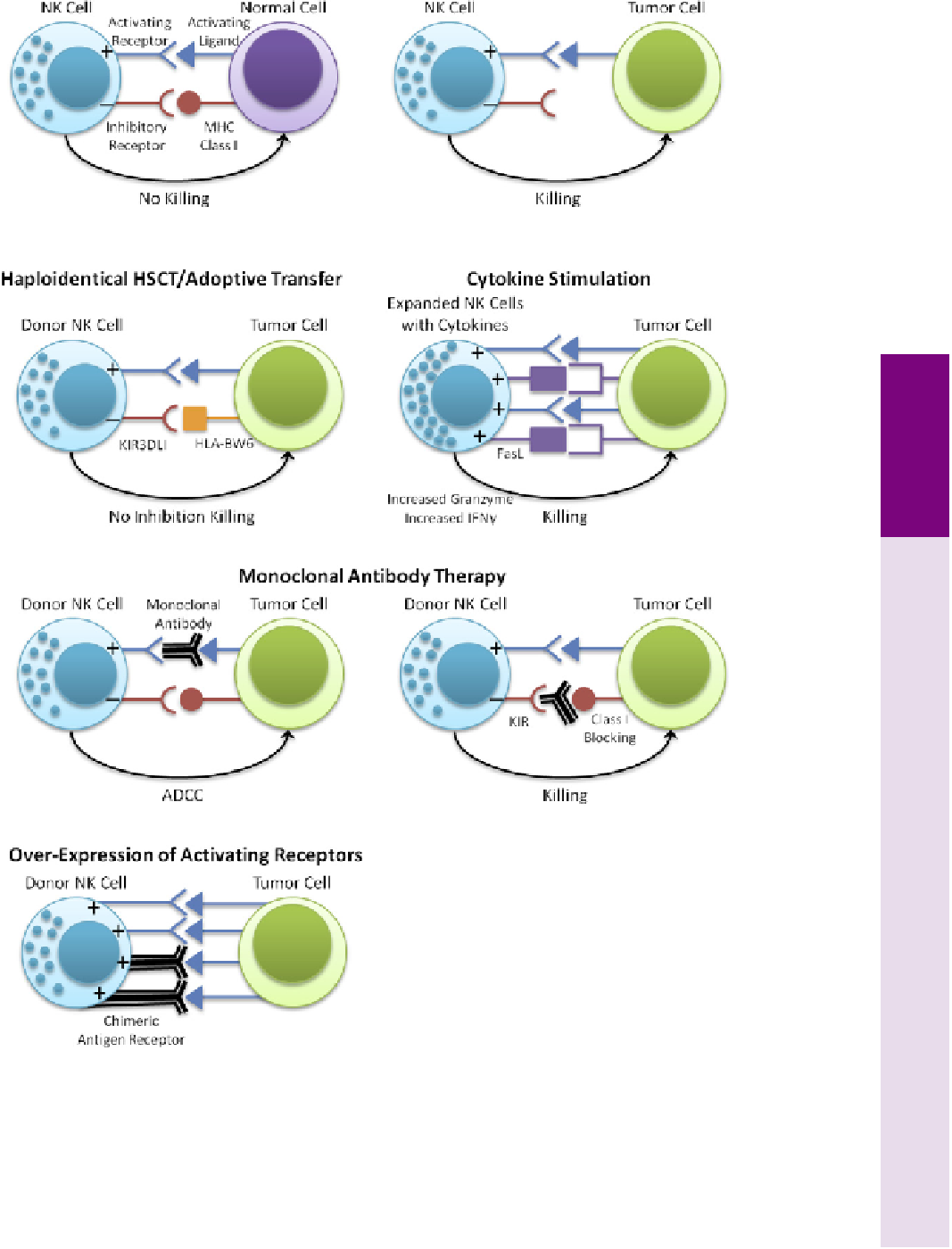Biology Reference
In-Depth Information
(A)
(B)
347
FIGURE 15.2
Enhancing NK cell elimination of tumor cells. (A) NK cell function is controlled by a balance of activating and inhibitory signals. Under homeostatic conditions, engagement of inhibitory
receptors with self prevents NK cell activation. However, loss of MHC class I on tumor cells results in NK cell activation and lysis of tumor cells. (B) The ability of NK cells to eliminate
tumor cells can be enhanced by various mechanisms. In the context of haploidentical HSCT or NK cell adoptive transfer, NK alloreactivity can occur when the donor expresses
an inhibitory KIR, e.g., KIR3DL1, that is not recognized by the recipient and the tumor is eliminated. NK cells expanded
ex vivo
with cytokines upregulate the expression
of activating receptors such as NKG2D and expression of FasL, which increases expression of granzyme and production of IFN-
γ
resulting in enhanced elimination of tumor cells. Monoclonal antibody therapy can also be used to target NK cell activity. CD16 can bind to the Fc portion of monoclonal antibodies directed
to antigens on the tumor cell resulting in a potent activating signal. It may be possible that optimal activation can tip the balance and override inhibitory signals.Alternatively, monoclonal antibodies
directed against inhibitory KIRs themselves can prevent NK cell inhibition. Another approach to enhancing NK cell function is engineering NK cells to overexpress activating receptors or
chimeric antigen receptors to increase NK cell activation, targeting, and elimination of tumor.

Search WWH ::

Custom Search